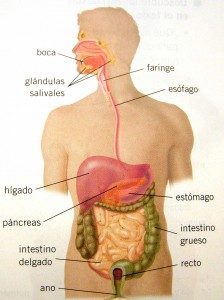 The Glasgow scale is an important tool used to quantify the level of consciousness of an individual and to establish the prognosis of an injury in which some form of brain damage has occurred.
The Glasgow scale is an important tool used to quantify the level of consciousness of an individual and to establish the prognosis of an injury in which some form of brain damage has occurred.
It was designed by two neurosurgeon doctors at the Glasgow Hospital, in England, where its name comes from, and published in 1974. From then on, its use spread to other hospitals in the United Kingdom and later globally, being used on a regular basis. in emergency services.
Parameters to be quantified on the Glasgow Scale
This scale allows to measure the level of consciousness and the cognitive state of an individual evaluating three fundamental aspects such as eye opening, motor response and verbal response after stimuli. The maximum value is 15 points and corresponds to a person without any type of brain involvement, while the minimum possible is 3 points, which is compatible with a deep coma.
Eye aperture. To carry out the opening of the eyes it is necessary to be awake and also attentive to the environment, this action requires that the neurons of the brain stem, thalamus and hypothalamus as well as the reticular system are undamaged in order to be carried out. Depending on the degree of stimulation that is necessary to obtain this response, a higher or lower score will be assigned to this category, it is necessary to rule out injuries that may affect this response, such as trauma to the eyelids or paralysis of the facial muscles to avoid an error in the measurement of this parameter on the scale.
Spontaneous eye opening: 4 points
Eye opening when speaking: 3 points
Eye opening to pain: 2 points
None: 1 point
Verbal response. Verbal response encompasses two fundamental processes, the ability both to understand instruction and to give a response. This part of the scale assesses the level of alertness and awareness of oneself and their surroundings, and can also identify if there are lesions in the language centers.
Oriented: 5 points
Confused: 4 points
Inappropriate words: 3 points
Incomprehensible sounds: 2 points
No response: 1 point
Motor response. This part of the scale assesses global brain function and the integration of the various areas, covers a higher score. Initially, simple orders should be given and the response evaluated, in the event that orders are not obeyed, painful stimuli should be applied to evaluate if there is any type of movement.
Obey orders: 6 points
Locate the pain: 5 points
Withdrawal of pain: 4 points
Abnormal flexion: 3 points
Abnormal extension: 2 points
No response: 1 point
How to interpret the Glasgow Scale
This scale was initially created to quantify brain damage in patients who had suffered head injuries, mainly from falls, car accidents, gunshot wounds. However, at present, its use is extended to all patients in whom it is necessary to evaluate the integrity of the functions of the brain.
The scores obtained on this scale can be affected by factors such as alcohol intake, the effect of drugs and sedative medications.
The application of the scale should be carried out in the first 24 hours and periodically thereafter, with which any deterioration or improvement in the patient's conditions can be identified early.
Photo: iStock - Eltoddo









